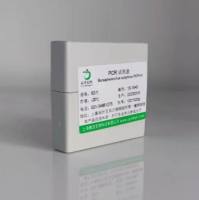A Highly Efficient Gene Delivery System Derived from Feline Immunodeficiency Virus (FIV)
互联网
互联网
相关产品推荐

SARS-CoV-2 (2019-nCoV) Spike Gene ORF cDNA clone expression plasmid (Codon Optimized)
¥4690

二级淋巴组织趋化因子(SLC)检测试剂盒CCL21; 6Ckine; CKb9; ECL; SCYA21; TCA4; ECL; Chemokine(C-C-Motif)Ligand 21; Beta Chemokine Exodus-2; Efficient Chemoattractant For Lymphocytes
¥800

btuC/btuC蛋白/btuC; OE_2952FCobalamin import system permease protein BtuC蛋白/Recombinant Halobacterium salinarum Cobalamin import system permease protein BtuC (btuC)重组蛋白
¥69

FelineImmunodeficiencyVirus(FIV)猫免疫缺陷病毒探针法荧光定量PCR试剂盒价格
¥3990

Capsid L1重组蛋白|Recombinant Human Papilloma Virus type 16 (HPV 16) L1 protein (VLP)
¥3220
相关问答

